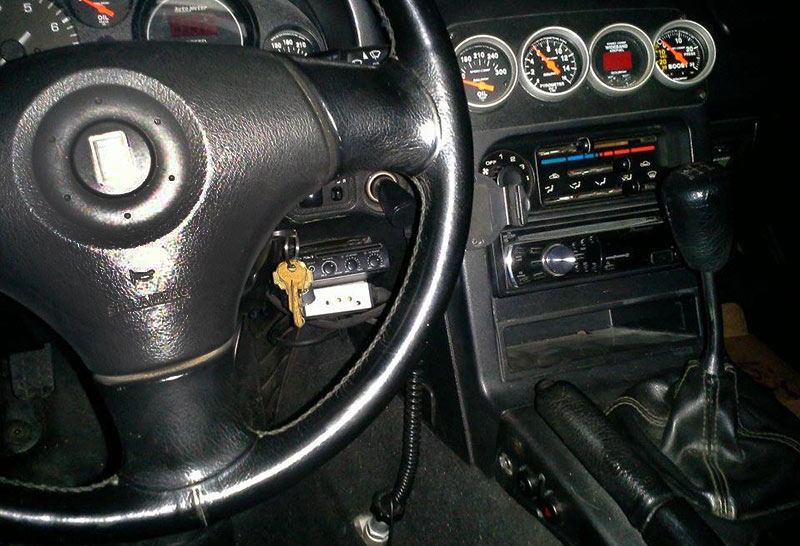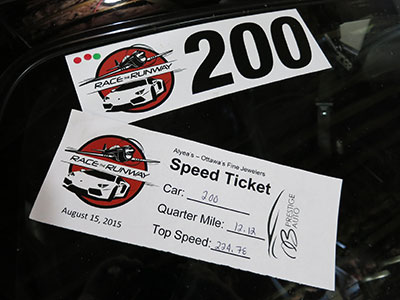The Mazda MX-5 Miata has a well-earned reputation for balanced handling, an easy-to-drive lightweight chassis, and overall affordability. But no one accuses the little roadster of being quick in a straight line. Enter Adam Miller’s 1997 Mazda Miata. It has a distinguished history of embarrassing many a high-dollar performance ride—thanks to its pint-sized engine packing a not-so-small 367 horsepower delivered at the wheels.
How do you squeeze such a scary amount of thrust out of a 1.8-liter, four-cylinder engine that, from the factory, produced a mere 130 horses? The secret is forced induction.
After buying his Miata in Alabama a few years ago, and driving it back to Montreal, Quebec, Miller headed to TK Race. The shop had the 1.8-liter unit strengthened with forged pistons and rods to accommodate the eyebrow-raising amounts of boost produced by the Garret GT2871r turbocharger—which Adam installed to feed it as much compressed oxygen as it could handle. Tuning the car himself through careful data logging, Miller was able to build a Miata that wasn’t just fire breathing, but also dead reliable.
Other goodies found under the skin of the turbo Miata include a Megasquirt stand-alone engine management system, water/methanol injection, and a three-inch exhaust system from front to back. The car’s 367 wheel horsepower are corralled by a five-speed RX7 TII transmission and a Torsen limited-slip rear differential, and since the car spends the majority of its time on a road course, it rides on Koni race dampers fitted to Ground Control coilovers, with the whole thing held together by full polyurethane suspension bushings.
What’s the best part about Adam Miller’s Miata, aside from the fact that it regularly destroys exotics at race-the-runway type events? Its stealth badness.
From the outside, you’d barely be able to tell there’s black magic voodoo lurking in its engine bay: a modest drop, front chin spoiler, and a trunk lid spoiler are the only not-so-stock aspects of the Mazda’s appearance. Inside things are business-like with Sparco race seats, a Hard Dog Hardcore rollbar (hidden by the Miata’s hardtop), and extra instrumentation to monitor the car’s finely balanced internal combustion process.
Any time you combine a car that weighs less than 2,500 pounds with a turbo setup that more than triples its engine output, you know you’re in for a good time. In Miller’s Miata, once the go-pedal is mashed to the floor, you might wish you had an oxygen tank in the passenger seat: just to make sure you can stay conscious through the G-load imposed by the first three gears.
See Complete Engines for Mazda Miata for sale on eBay.









